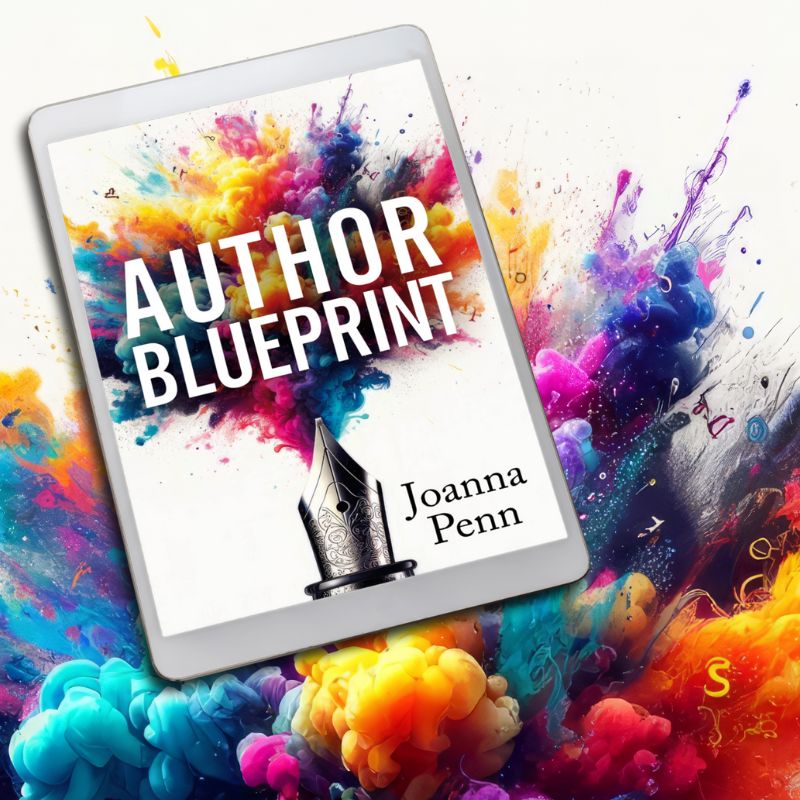“In anything at all, perfection is finally attained not when there is no longer anything to add, but when there is no longer anything to take away.” Antoine de Saint Exupéry
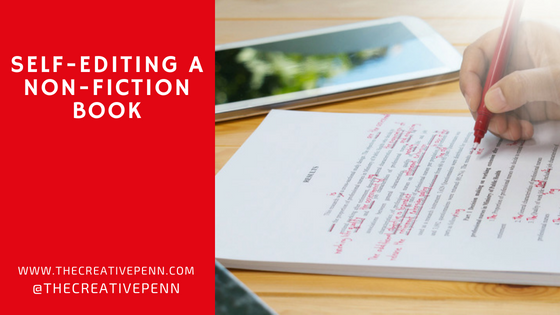 You have finished the first draft when you can print it out and read it end to end without missing sections. It is the raw material that you can now shape into the finished book.
You have finished the first draft when you can print it out and read it end to end without missing sections. It is the raw material that you can now shape into the finished book.
I don't recommend that you share your first draft with anyone, but wait until you have at least done this first self-edit, as you will find it much improves your work in progress.
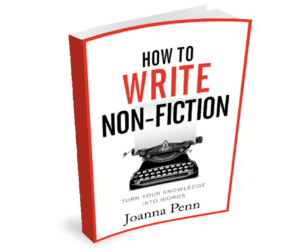 This is an excerpt from How to Write Non-Fiction: Turn Your Knowledge into Words by Joanna Penn. Available in ebook, print, audiobook and workbook formats.
This is an excerpt from How to Write Non-Fiction: Turn Your Knowledge into Words by Joanna Penn. Available in ebook, print, audiobook and workbook formats.
My self-editing process
I find printing out my first draft to be the most effective way of self-editing, as it turns words on the screen into something that more resembles a book. I will often ‘rest' the manuscript at this point, leaving it in a folder until I feel less emotionally connected to it and able to tackle the text with a clear mind. This usually takes a week or so.
I schedule blocks of time for editing, then work old-school with a biro to scribble notes, draw arrows to move things around, write extra material, change words, and delete lines, as well as completing any placeholders like [insert explanation here]. Some pages end up as a mass of black marks, others are relatively clean. But no page goes untouched.
Of course, you can use a computer screen or tablet, but I'd suggest at least changing the font, so there is some difference to when you were writing. It’s always difficult to see our own errors.
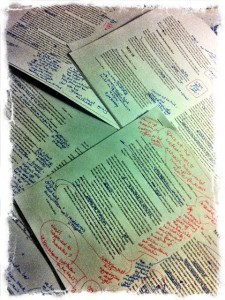
This first round of editing is more about structure, missing sections, and big issues than it is about grammar and sentence structure, although of course, you will pick those up, too.
When you read the manuscript end to end, you may discover that the order of the chapters is wrong, or you need a quote for this section, or you need to rewrite a whole segment to make it clearer. This process is completely normal, and this first edit is likely to be the major one, as you hack the text into something closer to the end goal.
I then type those hand-written changes back into my Scrivener project and make more updates as I go. If the changes are significant, I will then print out the manuscript again and do another round of hand-edits.
In this first self-edit, aim to improve the manuscript in the following ways.
Make the reader's journey through the book as clear and easy as possible
Words are a form of time travel and telepathy. The words you write down on a page are transmitted into another person's brain at a different point in time and space. But you won't be there to explain what you meant if the reader is confused.
Unlike a blog post or social media chat, there is no real-time interaction around a book. It's your job to make the book as clear as possible, so there are no outstanding questions.
- Does the chapter flow take the reader logically through a journey of discovery and transformation?
- What would make it stronger?
- Are you using jargon without explaining it?
- Can you use sub-headings to make sections clearer?
- Can you involve the reader by asking more questions?
Cut it down
“Examine every word you put on paper. You’ll find a surprising number that don’t serve any purpose.” William Zinsser, On Writing Well
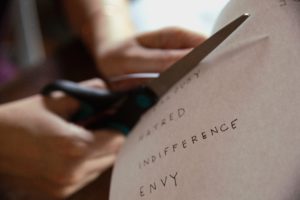
Don't worry about word count, as one of the most common complaints about non-fiction is that it is ‘over-padded.' Short books with clear benefits to the reader are better than longer ones that the reader has to wade through to find the gold.
Make it more personal
If some chapters are too info-dense, or the book is lacking in personality, then add in more of your story and experience. You can also use quotes per section to bring in different voices. I like to use excerpts from my journals, as well as appropriate quotes I've collected. In The Healthy Writer, we used quotes from a reader survey, bringing multiple new voices to the text.
You might read over some sections and feel that they don't sound like your voice. If this happens, you may have inadvertently copied something from another book, so make sure you reword anything that doesn't sound like you in order to avoid plagiarism.
“Good writing does not succeed or fail on the strength of its ability to persuade. It succeeds or fails on the strength of its ability to engage you, to make you think, to give you a glimpse into someone else's head.” Malcolm Gladwell
Check your facts and quotes. Add references or extra bonus material.
Have you kept a list of your references and included that in an Appendix?
You can complete this section later, but it's best to check facts as you go, collect references, and put things together in draft form as you edit. Trust me on this! It will be a lot more work if you leave it to the last minute and have to scour through everything trying to find where you quoted from.
You can also consider extra material at this stage.
- How can you make the book even more useful?
- Can you make downloadable extras or checklists?
- How about audio snippets or videos that will help the reader even more?
Use Grammarly to improve the draft

Once I’ve finished my edits, I copy and paste each chapter into Grammarly editing software. It picks up passive voice, repetitive words, incorrect comma usage, typos, and bad sentence structure, and even has a plagiarism checker.
Click here to watch my tutorial.
I could leave all this to my editor or proofreader, but I want to hand over a clean manuscript so they can look for other issues on their pass through. I also learn more if I go through this process, which improves my writing for the next book.
You will likely have a ‘writer's tic,' sometimes more than one, and it can be hard to spot these for yourself. I overuse words like very, own, or actually, and have to remove them in my self-edit.
Read the book out loud
If you want to check that the book makes sense, try reading it aloud. It’s easy to spot bulky sentences this way, so it's particularly useful if you come from an academic background and are prone to writing at length.
If you intend to turn the manuscript into an audiobook, this can be a useful exercise to determine what might not work when read aloud, for example, long lists of bullet points, URLs, or diagrams.
When have you completed a self-edit?
When you feel that you cannot improve the book anymore, rest the manuscript again. Put it away for a week or two and try to forget about it.
Then print it out and read it through once more. You will find more to improve, but of course you have to balance the need for perfection with getting your book out into the world.
When you really can’t do anymore, it's time to work with a professional editor and proofreader.
This is an excerpt from How to Write Non-Fiction: Turn Your Knowledge into Words by Joanna Penn. Available in ebook, print, audiobook and workbook formats.
Need more help?

- My Books for Authors, including How to Write Non-Fiction
- My Courses for Authors, including How to Write Non-Fiction, and How to Write a Novel
- The Creative Penn Podcast, interviews, inspiration and information on writing, publishing, book marketing and creative entrepreneurship every Monday
- My videos at YouTube.com/thecreativepenn

(Scissors photo by Pro Church Media on Unsplash. Laptop photo by Glenn Carstens-Peters on Unsplash)
